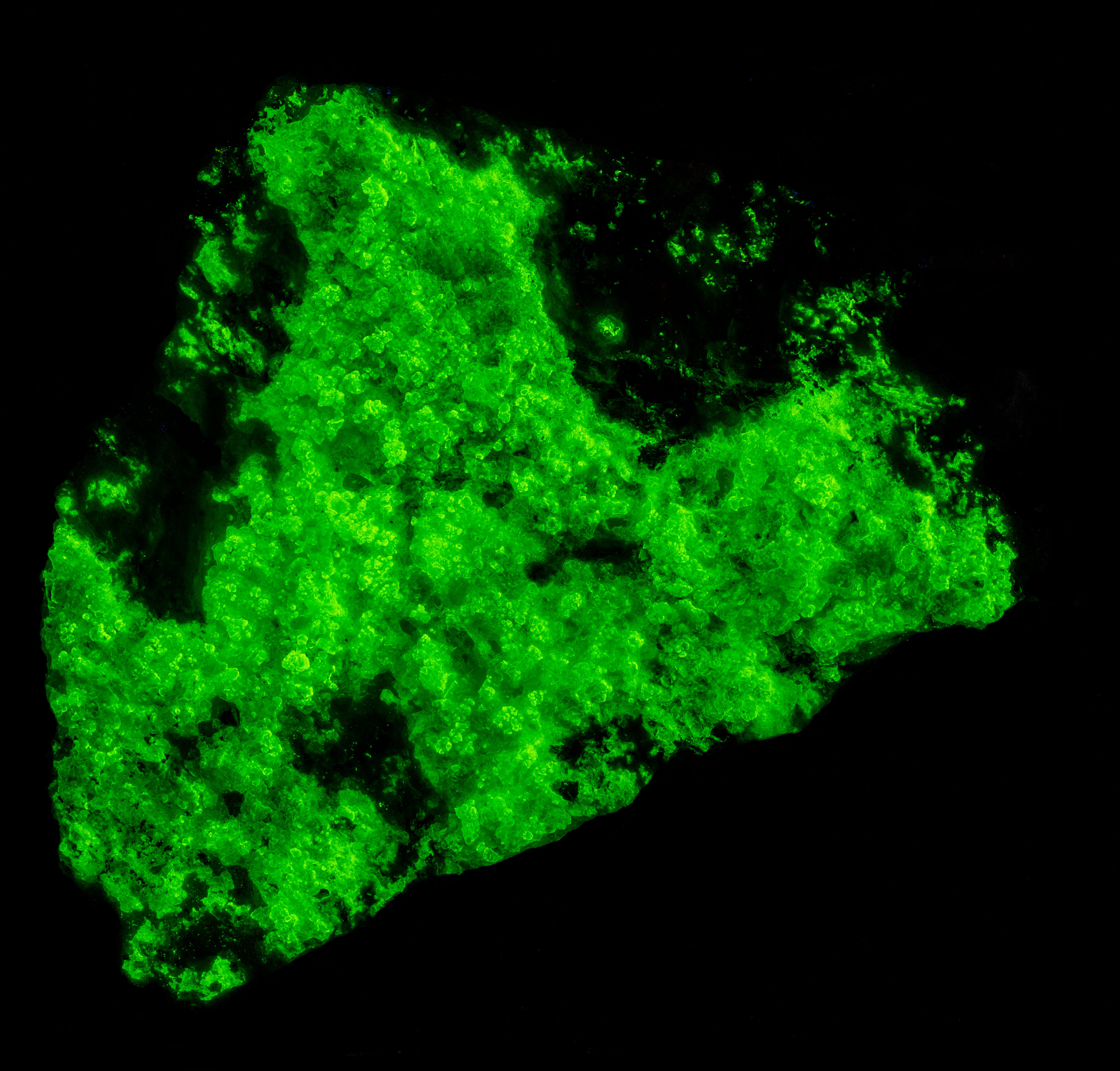Opal-AN and Feldspar from Chalk Mountain Mine, North Carolina
Contributed by: Michael Crawford
Date: Jun 18th, 2025
Locality: Chalk Mountain Mine, Spruce Pine, Mitchell County, North Carolina, USA (See on Mindat)
Size: 10 x 10 cm
Description:
These are two specimens of opal-AN from the Chalk Mountain Mine, Spruce Pine, Mitchell County, North Carolina. The opal-AN in one specimen is blue-green and is colorless in the other specimen. The blue-green variety is less common at Chalk Mountain. Copper has been described as the cause of the blue-green color. The copper bearing uranyl minerals, torbernite and metatorbernite, also occur at the Chalk Mountain Mine.
The opal-AN is a secondary mineral that has been deposited on a fracture surface. Copper and uranium were leached from the surrounding rocks is the likely source for trace amounts that cause for the opal-AN’s blue-green color and the uranyl-activated green fluorescence in the opal-AN. Trace amounts of copper and uranium rather than disseminated torbernite and metatorbernite are responsible for the green coloration and fluorescence. Torbernite and metatorbernite are generally non-fluorescent.
Copper often acts as a quencher of fluorescence. There is no obvious decrease in the fluorescent brightness of the blue-green opal-AN due to copper quenching compared to the colorless opal-AN. The green fluorescence is very bright in all wavelengths of UV illumination. Chalk Mountain opal-AN is often cited as one of the brightest specimens in the world of fluorescents.
Spectral plots of the opal-AN shortwave emission have peaks at 503 nm, 523 nm, and 544 nm. The spectral signature is like the autunite emission signature, but the opal-AN has one less peak, and the long wavelength peaks are shifted (544 nm vs. 547 nm). The autunite peaks are at 503 nm, 523 nm, 547 nm, and 572 nm.
The opal-AN is coating a fracture in a matrix of alaskite, an igneous rock. Alaskite is composed of sodium rich oligoclase, quartz, microcline, and minor muscovite. Oligoclase is very similar to albite. It is an intermediary member of the albite-anorthite solid solution series. Oligoclase contains 90 to 70 percent albite (the sodium rich end member) and 10 to 30 percent anorthite (the calcium rich end member). Potassium rich microcline is an end member in the albite-microcline solid solution series. The shortwave emission spectrum of the oligoclase fluorescence is similar to albite with a maximum in the near infrared at 720 nm. The microcline spectrum of these specimens has a peak at 710 nm. This microcline spectral peak is at a longer wavelength compared to typical microcline spectra. They have peaks at 685 to 700 nm. The microcline in these specimens may not have the composition of the end member microcline.
The green opal-AN shortwave fluorescence is so bright that it overwhelms the very dim red fluorescence of oligoclase and microcline in the true color image. The opal-AN has no fluorescence in the near infrared, but the feldspars are fluorescent in the near infrared. Near infrared images of these specimens cannot differentiate between the two types of feldspar because their spectral peaks are too close to one another. The color infrared images combine the visible fluorescence of the opal-AN and the near infrared fluorescence of the feldspar. The feldspars appear red in the color infrared and the opal-AN is blue.
The radioactivity of the two opal-AN specimens was between 80 CPM to 105 CPM. The autunite specimen radioactivity was 29,000 CPM.
The dimensions of the blue-green opal-AN specimen are 11cm by 9cm, and the colorless opal-AN specimen measures 10cm by 10cm.
Summary of luminescence responses:
Opal-AN (Mindat) (RRUFF)
- Fluorescence under Longwave (365nm LED) UV light: Green
- Fluorescence under Midwave (305nm LED) UV light: Green
- Fluorescence under Shortwave (255nm LED) UV light: Green
- Fluorescence under Shortwave (255nm LED) UV light: Red
- Fluorescence under Shortwave (255nm LED) UV light: Red









